
| Education
|
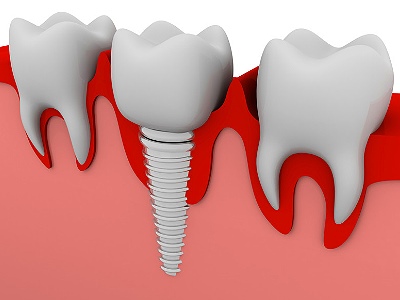 Implant Dentistry – Single Tooth Replacement Implant Dentistry – Single Tooth Replacement
There is no better long-lasting option to restoring a missing tooth than a dental implant fitted with a crown. After consultation and planning then there is a surgical placement of the dental implant. The dental implant integrates with the natural bone to form a strong foundation for your replacement tooth. Then a custom-made abutment is placed within the implant and a custom-made ceramic crown is fabricated as the final step in tooth replacement. |
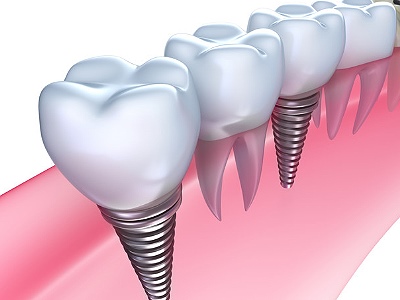 Implant Dentistry – Multiple Teeth Replacement Implant Dentistry – Multiple Teeth Replacement
Replacing multiple teeth using dental implants with individual crowns or with an implant-supported fixed bridge gives your teeth a level of fit, feel and functionality that is not possible with other treatment options. After consultation and planning, dental implants are placed in precise positions and will then be used to support your replacement teeth. After the implants integrate with the natural bone, then custom abutments are made in an exact manner to help connect your replacement teeth on top of each implant. The fixed bridge is then permanently cemented in place as a unit and it is then a very strong area for normal mastication. |
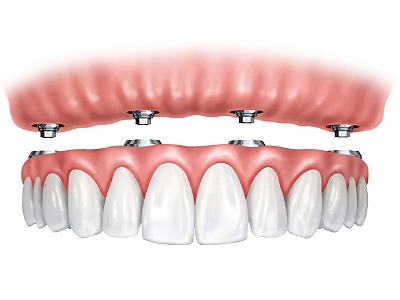 Implant Dentistry – Full Mouth Implants (Full Arch) Implant Dentistry – Full Mouth Implants (Full Arch)
Traditional replacement of a complete set of upper or lower teeth using dental implants is completed over multiple visits. After consultation and planning multiple dental implants are placed in the appropriate positions that will be used to support your replacement teeth. Placement of abutments or connectors placed on or built into the top of the implants are done in order to help connect your replacement teeth. The final stage of treatment after these steps is often an implant-supported overdenture. The overdenture snaps in place accurately and exhibits very good retention, but can also be removed for thorough cleaning, brushing and flossing. |
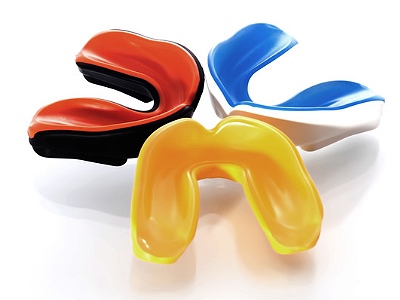 Sports Mouth Guard vs. Dental Night Guard Sports Mouth Guard vs. Dental Night Guard
Many people wonder “ What’s the difference between a sports mouth guard and a dental night guard”? When a patient is diagnosed with bruxism, a teeth grinding problem, a few remedies may be suggested to resolve the issue. The most popular is the night guard. The night guard or mouth guard does not really stop the habit of teeth clenching and grinding, but it helps the patient prevent possible damage to his teeth. The mouth guard is an oral appliance that the patient wears during sleep so that it can absorb all of the clenching and grinding forces taking place. Both a night guard and a sports guard are meant to protect teeth, but they protect teeth in different ways. A hard plastic night guard functions by protecting the teeth surfaces from being worn down from constant grinding and clenching. A softer rubbery sports mouth guard is primarily worn to protect the teeth and mouth in the case of a sudden, hard impact. |
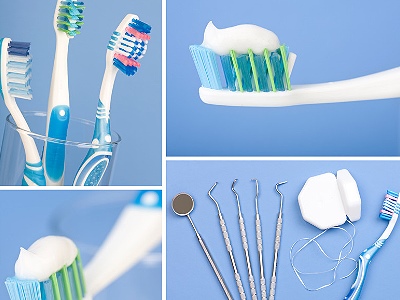 Six Great Dental Health Tips Six Great Dental Health Tips
1. Brush Your Teeth Properly When brushing, place the bristles of the toothbrush at a 45-degree angle near the gum line, such that the bristles are in contact with both the teeth and the gum area. Brush using a back and forth, and an up and down movement. When you finished cleaning those outer areas , repeat the same for the inner surfaces of your teeth and gums. The biting surfaces also need some thorough brushing strokes. Then brush the surfaces of your tongue and roof of your mouth. Also, make a habit of brushing thoroughly at least twice a day, preferably in the morning and in the evening. 2. Floss Regularly As wonderful as brushing regularly is, it does not cover all of the areas that need to be cleaned daily. Brushing does not reach the spaces in between the teeth. Thorough flossing gets rid of food residue and bacterial plaque stuck between the teeth. If you really care about your dental hygiene get into the habit of flossing at least once per day. 3. Ensure That Your Diet is Teeth Friendly Our primary reason for eating something is that it tastes good. But have we considered what different foods or snacks can do to our teeth? Foods such as nuts, fruits, cheese, chicken and vegetables are teeth friendly. After eating, it is always a good idea to brush soon after, if you are able to do so. 4. Limit Intake of Sodas and Alcohol Tobacco is something you should run away from. Avoiding this can save you from some potential periodontal complications, such as oral cancer. Soda and alcohol contain phosphorus, which is an important mineral in good health. But too much is bad, and it can deplete the calcium level of the body, possibly causing tooth decay and contribute to gum disease. 5. Visit the Dentist Regularly As you apply these previous steps in your daily routine, there is never an excuse to not go for regular dental checkups. Usually it’s recommended to try to have a full oral checkup and teeth cleaning twice per year. There are dental problems that you may not be able to identify on your own. The dental professional is trained to identify and then treat dental problems as they occur. 6. Leave a Little Fluoride in Your Mouth Before Bedtime Fluoride helps to strengthen the tooth surface so why rinse it off after brushing your teeth? It is not advisable to do this when brushing your teeth in the morning. But what about at night before you go to bed? Allow the fluoride to sit on the surface of the teeth by not rinsing off the paste with water after brushing. |
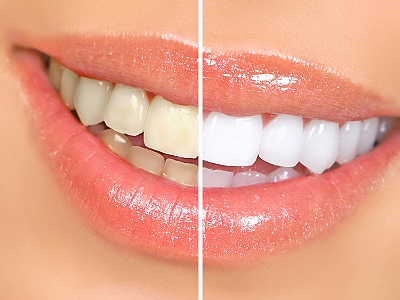 Five of the Most Commonly Asked Questions About Teeth Whitening: Five of the Most Commonly Asked Questions About Teeth Whitening:1. Why Did My Teeth Change Color? Your teeth can go from white to not-so-bright for a number of reasons: food and drink, tobacco use, age, trauma and medications are some of the main culprits. 2. How Does Teeth Whitening Work? Teeth whitening is a simple process. Whitening products contain one of two tooth bleaches (hydrogen peroxide or carbamide peroxide). These bleaches break stains into smaller pieces, which make the color less concentrated and your teeth brighter. 3. Does Whitening Work on All Teeth? No, which is why it is important to talk to your dentist before deciding to whiten your teeth, as whiteners may not correct all types of discoloration. Yellow teeth will probably bleach well, brown shades may be successful and gray tones may not bleach at all. Whitening will not work on crowns, veneers or tooth-colored fillings. 4. What Are My Whitening Options? • Whitening toothpastes – All toothpastes help remove stain through the action of mild abrasives that scrub • Whitening strips - These materials are used at home and they are adherent strips that attach to both upper and lower teeth with the active ingredient only working for about an hour per session. The total course of treatment is for up to two weeks of time. • At Home Bleaching – Peroxide-containing whiteners actually bleach the tooth enamel. They typically come in a gel and are placed in a tray that fits on your teeth. Usually these trays are placed in the mouth at bedtime and the total course of treatment is about 4-5 days. 5. Are There Any Side Effects From Teeth Whitening? Some people who use teeth whiteners may experience tooth sensitivity. In most cases the sensitivity is only |
What Our Patients Are Saying...



